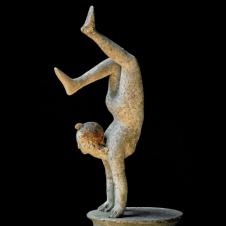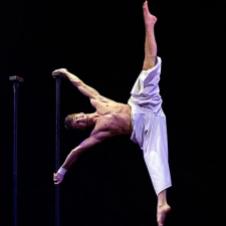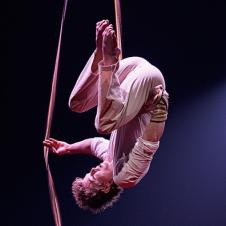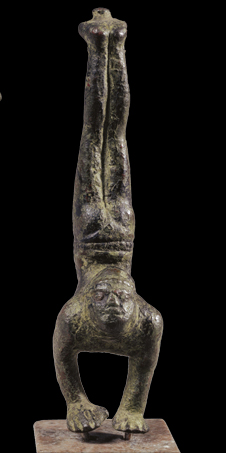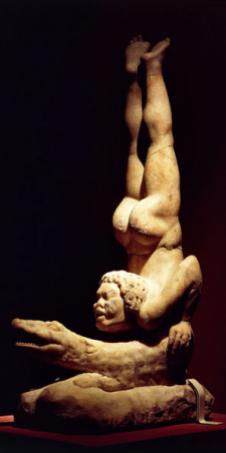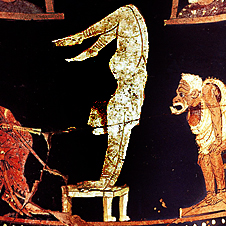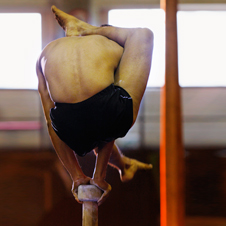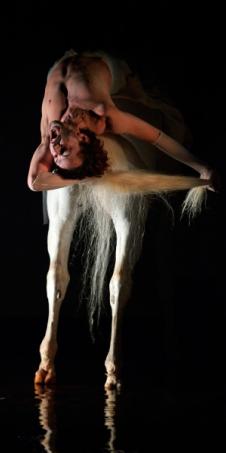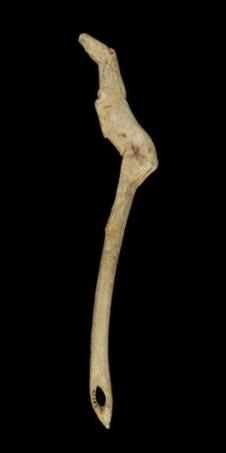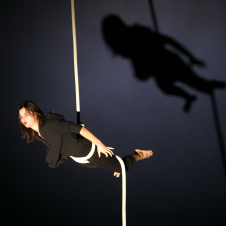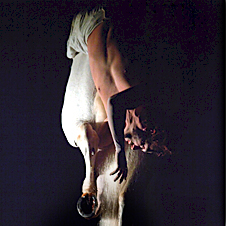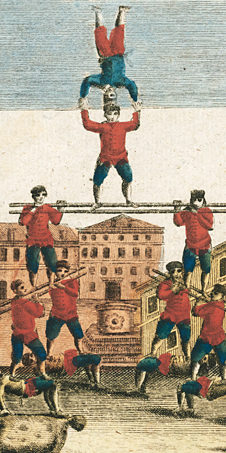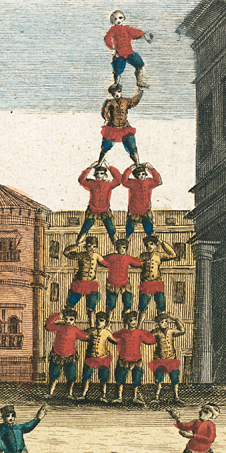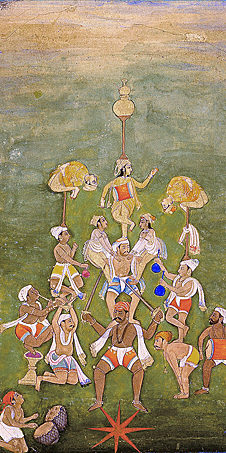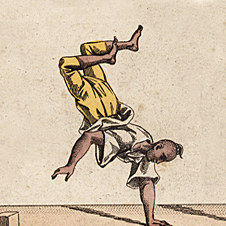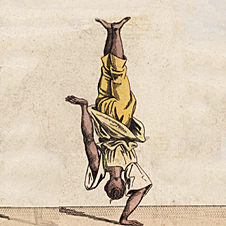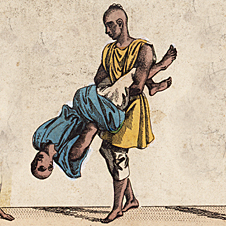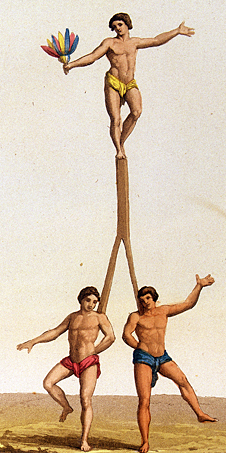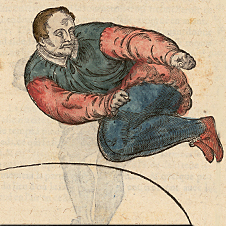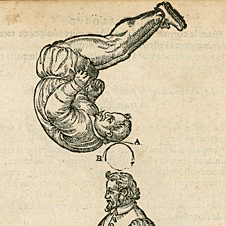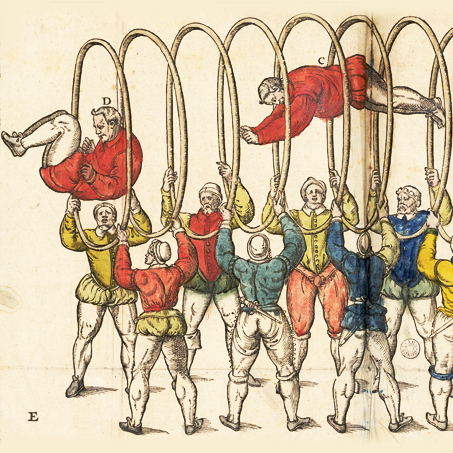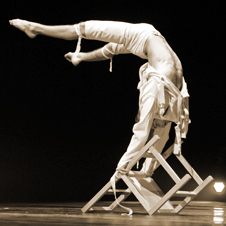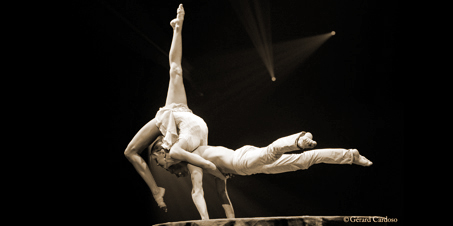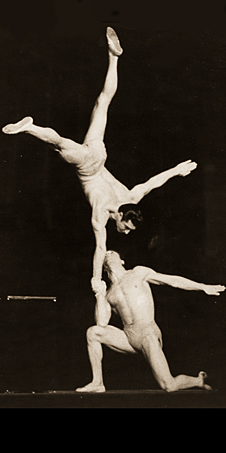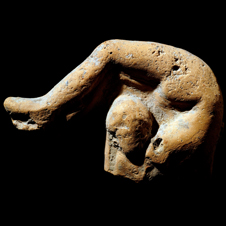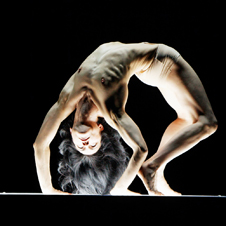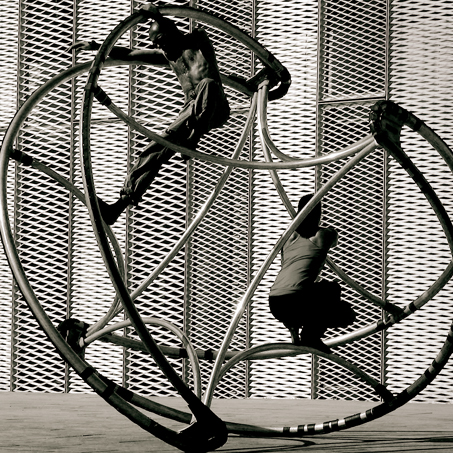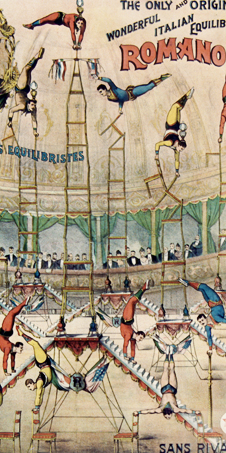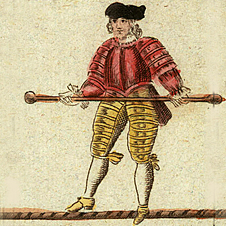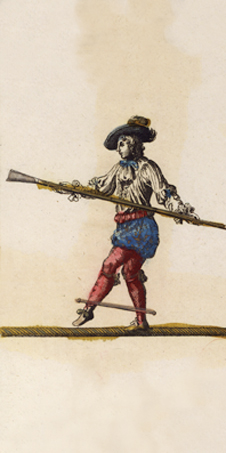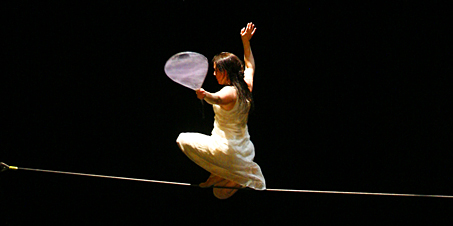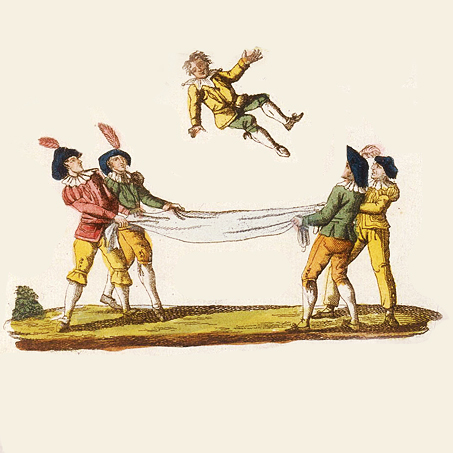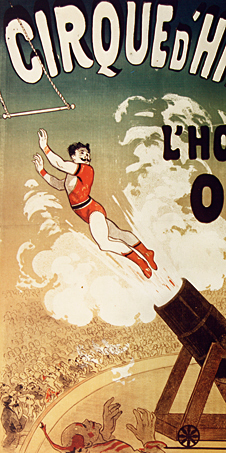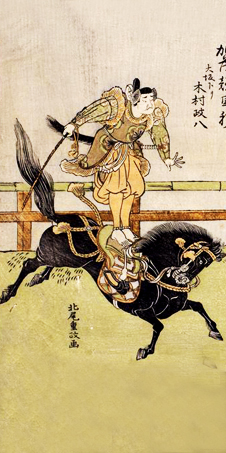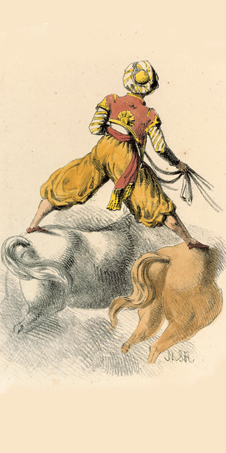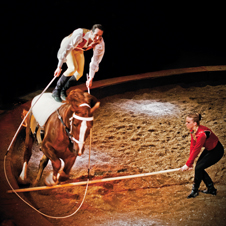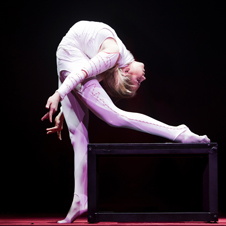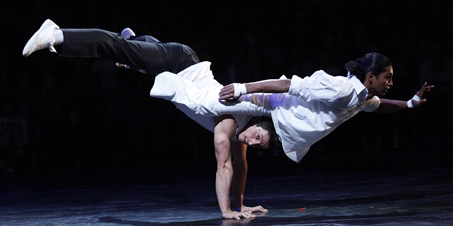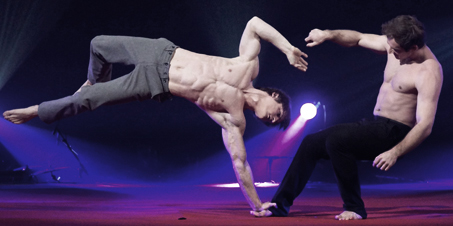Acrobatics
Etymologically, an acrobat is someone who moves around on their extremities. Acrobatics is a way of playing with the body, of having fun with the constraints of gravity, of producing an effect of surprise, and of inciting admiration.
Warding off death
During ancient times in Sumer, in Egypt, or at the outskirts of the Indus, its practice was often linked to funeral ceremonies. Jumps and flexibility had a "warding off" function by opposing the present death with a sequence of figures representing the irrepressible vitality of life. By symbolically dominating his body, the acrobat is a figure of progress: there is no inversion that cannot be righted, in this source of rebirth that conveys the transition from one world to the next.
Imitating prey
Imitation rituals of animal behaviours lay behind the development of the first acrobatic forms. To convince the gods to place the largest number of prey on the hunters' paths, the group would imitate certain creatures in the most explicit way. Speed, strength, agility, and flexibility characterize numerous species: by imitating these, and by selecting the most talented individuals form the clan, the men would gradually acquire the same abilities.
Spectacular acrobatics
When hunter-gatherer communities became sedentary societies of farmers and breeders, they preserved the memory of these hunting rituals and gradually turned them into an artistic and profane vocabulary. Circus techniques such as the Chinese poles, contortionism, balancing, pyramids, lifts and hand-to-hand, arose from these games of imitation, from the pleasure of competing to climb a tree as quickly as possible, and from the need to support and carry oneself ever closer to the stars.
A universal repertoire
These spectacular figures resonate like a fertile memory: contemporary acrobatics has no other source, even though it has continued to grow richer from this symbolic base. All along the Silk Road, linking East and West, a universal repertoire was developed through encounters, confrontations, exchanges and aggregates, leading to a sort of inventory of feats, and an intuitive footbridge between men and civilizations.
The meeting of disciplines
Century after century, branches of techniques and disciplines have gradually transformed into a powerful shared trunk. And this is how several of the fundamental disciplines in the history of acrobatics, such as jumps, balancing, contortion, and Icarian games, etc. appeared, evolved and blended. All these floor techniques would soon be combined with propulsion machines, mobile engines, and apparatus that drove the development of aerial acrobatics in particular.
Acrobatic jumps
It is probably not a coincidence that the first acrobatic treatise identified, published in 1599 in Paris, is called Trois Dialogues de l'exercice de sauter et voltiger en l'air (Three conversations about the exercise of jumping and turning in the air). Grounds for competition, the jump was above all one of the circus's principal tricks. Somersaults, daredevil, and death leap: the terminology is unambiguous and reinforces the fatal dimension of a performance that has been endlessly worked on and complicated.
Acrobatic balancing
In the circus, balancing is a quality. It is also is a blend of strength and elegance that sometimes borrows from contortionism. Numerous artists favour working with canes. Some prefer working in direct contact with the ground, or on a pedestal. Fundamentally, acrobatic balancing is based on the illusion of stability, when the latter appears impossible to imagine. Acrobatic balancing is the centre of an intense activity that needs to be organised in order to mask its difficulty, and to give the impression of ease and immobility.
Hand-to-hand
Circus disciplines originating in war are numerous, but the hand-to-hand act is perhaps the only one that both borrows from bare, hand-to-hand combat, and evokes the notions of engaging and confrontation, as well as embracing and complicity. Dynamic hand to hand draws on the origins of jumping and creates a completely different balance of power by emphasizing propulsion and valorising the paradox of rejection and attachment.
Contorsionism
Linked to shamanic practices, certain acrobatic exercises are similar to primitive rites. Acrobats and dancers expect that defying gravity, when pushed to extremes, will deliver them to a divine creative power. Acrobatics symbolizes the attainment of a superhuman condition. It is a type of ecstasy for the body. And everything that decorates the flesh – powder, oil, skin, or feathers – helps increase the mystery of elevation and transcendence. Today, Asian and Western contortionists follow this tradition in a profane and spectacular register.
Mobile engines
The circus has always shown an extraordinary aptitude for incorporating inventions throughout its history. The bicycle was rapidly integrated into the acrobatic repertoire and benefitted from technical developments to encourage artists to develop and complicate the vocabulary linked to this new "apparatus."
Acrobatics with apparatus
A unifying language of the circus arts, acrobatics bloomed both with and without apparatus. Apparatus serves above all as a factor of diversity, creativity, and enrichment for the discipline. Whether static or mobile, apparatus can be a support providing assurance, or a vector of instability. From balancing poles to the Chinese poles, from the free ladder to fixed bars, from perch pole to wooden beam, from balance ball to rola bola, and from the chair to glass bottles, it enables the acrobat to compose his own score in harmony or in confrontation with the chosen partner object.
Aerial acrobatics
Man has always tried to free himself from the laws of gravity, gain distance from the ground, and to fly. Icarus was, of course, the first legend, but following acrobatics, it was mainly the Course aux Trapèzes (trapeze race), that changed the perception of acrobatics, which until then had mostly been anchored to the ground. The various jumps were a good prelude to flight, but it was the flying trapeze that enabled circus men and women to open a new chapter in the history of feats by taking them into the air.
Propulsion
Man has always dreamed of acquiring the mobility of the fastest animals and has continually sought ways to run faster and jump higher. Since the 19th century, acrobats have created both very simple and incredibly sophisticated apparatus to propel them into the air and over distances far beyond what the human body could achieve on its own. Multiple propulsion techniques gave rise to the creation of collective numbers as well as a new register of individual practices.
Equestrian art
The horse is undoubtedly the most beautiful of the circus's conquests. The complicity between man and animal, domesticated for more than 9,000 years in the Middle East, and a companion in work and in war, encouraged the singular links between rider and mount. Associated with the art of war since Ancient times, the horse appears on every battlefield and was taught numerous skilful variations of which acrobatics, which was soon freed and became a circus technique, is the most spectacular.
Mastering imbalance
Strength, flexibility, and agility characterise acrobats and are a prelude to multiple spectacular techniques that compose the framework of a performance by gradually blending with equestrian exercises. It was mainly around this body of work that skill blossomed. Inversions and dislocations are grounds for extraordinary feats, accentuating the acrobat's fragility while praising his ability to right himself. Therein lies the most powerful symbol of acrobatic movement – mastering imbalance, which is a factor of progress and a classical metaphor for rebirth.



